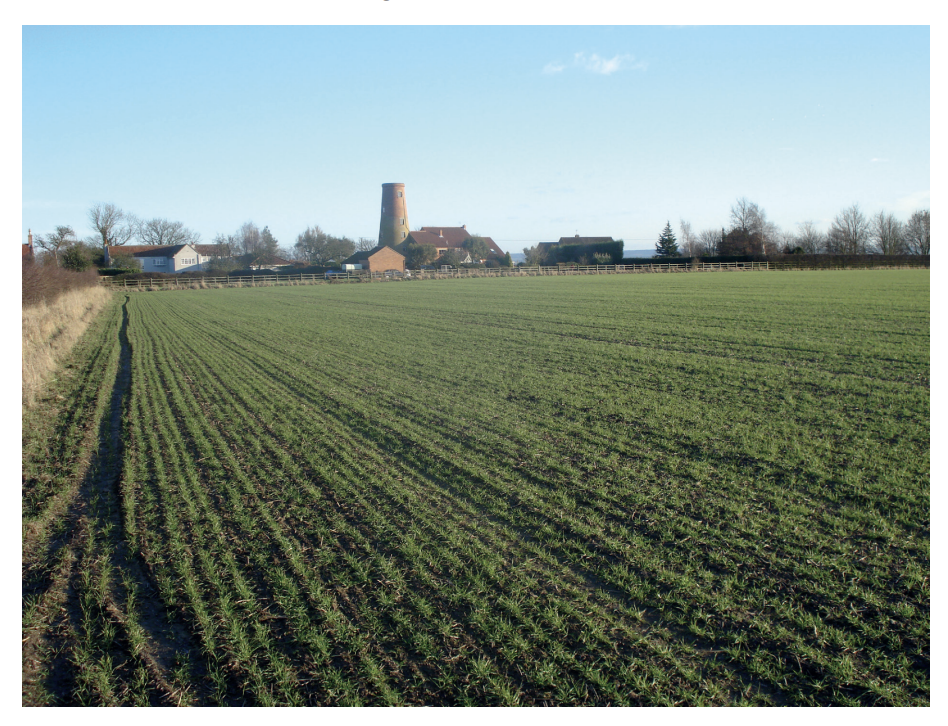Study Figs. 6.1 and 6.2, which show information about a subsistence farming area in The Gambia (an LEDC in Africa).


- the rice fields
- the vegetable gardens
- the fields of maize and millet.
Did this page help you?
Study Figs. 6.1 and 6.2, which show information about a subsistence farming area in The Gambia (an LEDC in Africa).


Did this page help you?
Study Fig. 6.3, which shows recommendations which agricultural experts have given to subsistence farmers in areas such as the one shown in Fig. 6.1.
|
Recommendation 1 Build a covered, concrete-lined well close to the farm. |
|
Recommendation 2 Put electric fences around the fields of maize and millet. |
|
Recommendation 3 Use some of the land to graze a small herd of goats. |
Fig. 6.3
-Build a covered, concrete-lined well close to the farm
-Put electric fences around the fields of maize and millet
-Use some land to graze a small herd of goats
[3]
Did this page help you?
Study Fig. 5.1, which shows information about agriculture in Pakistan, an LEDC in Asia.

Suggest three ways that farmers in Pakistan were able to increase the area of arable land in the country between 1950 and 2010.
1 ............................................................................................................
2 .............................................................................................................
3 .............................................................................................................
Did this page help you?
Study Figs. 6.1 and 6.2, which are photographs of a commercial farm.


| inputs | processes | outputs |
Did this page help you?
Study Fig. 6.3, which shows information about grain production in Brazil between 1990 and 2014.

Compare the change in grain production in Brazil with the change in the area of land planted with grain and harvested between 1990 and 2014.
You should refer to years and use statistics in your answer.
Did this page help you?
Study Fig. 5.1, which is a photograph of an area where subsistence farming takes place.

Fig 5.1
[1]
[2]
| Inputs | Processes | Outputs |
[3]
Did this page help you?
Study Fig. 5.2, which is a graph showing information about the world production of wheat and rice between 1980 and 2013.

Compare the world production of wheat and rice between 1980 and 2013. You should use statistics in your answer.
Did this page help you?
For a named country or region you have studied, describe and explain the natural and human factors that cause food shortages
Did this page help you?
For a named country or region you have studied, describe the effects of food shortages and the solutions being used to tackle them
Did this page help you?
Describe and explain the benefits and disadvantages of solutions to food shortages.
Did this page help you?
For a named country or region you have studied, explain how natural factors have caused food shortages.
Name of country or region ..............................................
Did this page help you?
For a named country or area you have studied, explain the causes of food shortages.
Name of country or area .............................
Did this page help you?
For an example you have studied, describe and explain the land use of a farm or agricultural area.
Name of farm or agricultural area ...............................
Did this page help you?
Study Figs. 6.1 and 6.2, which show information about a subsistence farming area in The Gambia (an LEDC in Africa).


Describe the problems which may be caused for local people if the area of woodland to the east of the village was cleared to grow more maize and millet.
Did this page help you?
Study Fig. 5.1, which shows information about agriculture in Pakistan, an LEDC in Asia.

Explain why many farmers in LEDCs, such as Pakistan, are subsistence farmers.
Did this page help you?
Study Figs. 6.1 and 6.2, which are photographs of a commercial farm.


Explain two factors which are likely to affect the way in which the farmer uses the land on the farm shown in Figs. 6.1 and 6.2.
Did this page help you?
Study Fig. 5.1, which is a photograph of an area where subsistence farming takes place.

Fig 5.1
Explain why many farmers in LEDCs are subsistence farmers.
Did this page help you?
Study Fig. 6.3, which shows recommendations which agricultural experts have given to subsistence farmers
|
Recommendation 1 Build a covered, concrete-lined well close to the farm. |
|
Recommendation 2 Put electric fences around the fields of maize and millet. |
|
Recommendation 3 Use some of the land to graze a small herd of goats. |
Fig. 6.3
Describe other methods farmers in LEDCs can use to increase their agricultural output.
Did this page help you?
Study Fig. 6.3, which shows information about grain production in Brazil between 1990 and 2014.

Suggest how farmers were able to increase the production of grain in Brazil between 1990 and 2014.
Did this page help you?

Did this page help you?